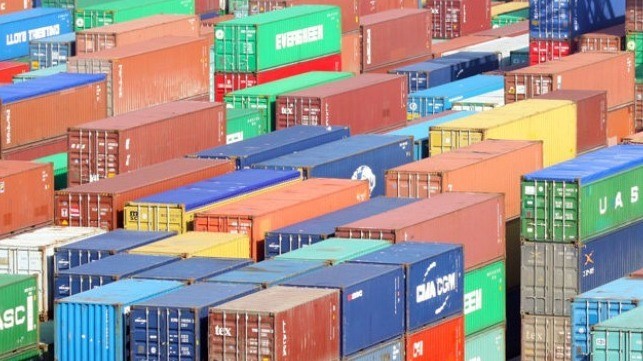Delivering data that matters, from periodic events to context-based alerts
Smart containers hold promise for revolutionizing supply chains. As leading carriers adopt smart container solutions, they gain valuable data that can be shared with shippers and other supply chain stakeholders. But generating and collecting data is not enough to make smart container solutions or supply chains “smart.” Stakeholders already manage huge amounts of data and struggle with multiple technologies that take time away from their core businesses.
A smart container solution must deliver data that matters, in a standard format for easy integration into different systems. It must enable unambiguous data interpretation and empower all involved stakeholders with actionable information. When trip plans, cargo information, and other information is shared with service providers, smart containers can keep them informed of “business-as-usual” conditions during the journey and alert them when conditions occur that require stakeholders to take action.
Identifying Data that Matters to Deliver Meaningful Information
Smart container solution providers need basic data from their customers and an understanding of customers’ daily operational expectations and challenges. For example, receiving dozens of monitoring messages indicating normal reefer container performance and hours later finding a message stating the reefer has been unplugged is frustrating. If the shipper had initially communicated specific reefer temperature expectations and shipping context information, the service provider could have avoided or quickly remedied the situation.
The UN/CEFACT Smart Container project has developed standards for smart container-generated data. This data model defines the data elements that can be used to describe smart container events occurring during the smart container journey.
Setting the Parameters for Smart Container Solutions
Smart container solutions must be able to measure, clean, enrich, and report on physical parameters—such as temperature, humidity, or shock—that shippers or other supply chain stakeholders care about. This means solutions must be configured to capture the correct data, along with specific parameters that define “normal” and “out-of-bounds” conditions. Data collection parameters depend on the type of cargo being transported and the beneficial cargo owner’s specific data requirements for its business. Only then can the smart container solution deliver smart data.
Parameterization Use Cases
Smart container data and analyzed information enable highly targeted container and cargo management across logistic networks. Ideally, shippers will communicate trip plans and acceptable ranges of measured physical parameters to the service provider or other stakeholder at the time of booking. The more data shared with the service provider, the more value the smart container can deliver to stakeholders.
For example, a carrier acting as the transport booking owner in association with a smart container service provider might care about handling units (containers) and ensuring the correct consignment papers are present (Bill of Lading) with no need to know cargo details. Sellers and buyers may be interested primarily in cargo tracking numbers and release of funds milestones. Insurance agencies will be concerned about adverse cargo conditions and trip deviations. Data from the same containers can configured to deliver exactly what interactions between multiple stakeholders require.
Basic, Regular Movement
Even if no parameters are shared with a service provider, they can still capture and communicate basic information such as geolocation coordinates and data gathered by sensors in use. Based on this, they can provide customers with updates on their shipments and continuously update arrival and departure estimates.
Alerts vs. Events
Smart container solutions capture event data throughout the journey. They can generate alerts when events occur that fall outside of normal parameters. For example, if a container is sealed prior to shipping, the smart container solution would alert the stakeholder if a door is opened during the journey. If the smart container parameters include trip plan information from the shipper, the solution will alert the stakeholder if the journey deviates from the plan with precise location and timing data.
With cargo information shared by the shipper, service providers can configure the solution for parameters such as temperature, humidity, shock, vibration, or other physical factors for granular cargo monitoring. Information is delivered to the stakeholder by message, email, or to the stakeholder’s internal systems via API. Parameters will trigger alerts when certain condition exceed the configured thresholds such as:
• Internal container temperature exceeds a certain temperature or falls below an acceptable range
• Humidity levels exceed the threshold
• Sudden shock occurs to the container
These kinds of alerts enable stakeholders to proactively accelerate investigation, alert other stakeholders, assess potential damage, avoid demurrage, avoid extended waiting periods or customs delays, and mitigate any consequences.
Trip Plan
When an owner communicates the trip plan, parameters can be set to communicate events or alerts such as:
• Cargo stuffing completed
• Loading at port
• Actual executed transit times
• Empty gate-in at depot
• Alerts about deviations to the trip plan or presence in a high-risk region
• ETA calculations
Setting Zone Of Interest Attributes and Policies
Smart container solutions can add specific qualifiers to geolocation and geofencing data. The smart container can differentiate when it is at sea, within a specified range from port, at a private depot, or at final delivery. Based on this data, it knows which events are normal and which are disallowed, communicating information such as:
• Inland hauling trip tracking, which might indicate theft or discharge at the wrong port
• Shielding door opening at a border, enabling fast-lane customs clearance
• Timing for each waypoint along the trajectory of movement
• Entering a zone of interest (ZOI) for waypoints, specific ports, or other parameters
Means of Transportation
When the means of transportation are communicated for each trip segment, a smart container can be configured to analyze movement and acceleration. This data can be correlated with geolocation, ZOI, and time elements to identify events such as a missing container onboard or transfer from ship to truck.
Diving Deeper into Data
Members of the supply chain can use smart container data to optimize their own business processes. Data can be pulled into existing business information systems and analysis tools for generating analytics specific to different business units.
For example:
Container lifecycle management: Data collected over the course of the container’s lifespan provides visibility into usage and condition. If the container has experienced multiple severe shocks, been subject to extremes of temperature, or had reefer failures, this data can be used to focus maintenance activities. Maintenance teams can easily prioritize tasks and save time.
Improving operations: Historical anonymized data collected and aggregated from multiple smart containers across many routes over time yields visibility into opportunities for process improvement. For example, analyzing lead times between ports can enhance accuracy of future booking decisions. Identifying bottlenecks on given routes can improve route and contingency planning. Calculating average container stationary periods in specific terminals can reduce demurrage.
Smart container information benefits everyone involved in the journey. Some members of the supply chain need real-time snapshots and dynamic updates for up-to-the-minute monitoring. Others need per-booking data to better serve customers. Still others need time-stamped verification of events for legal and compliance reasons. Smart container solutions enable each shipment to deliver data that matters to the people who need it.







Comments (0)